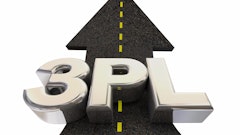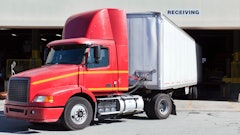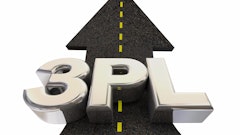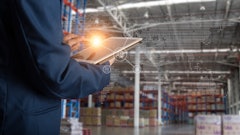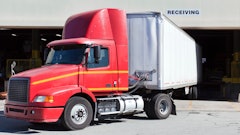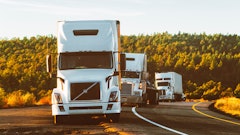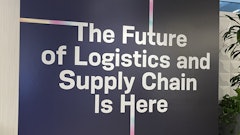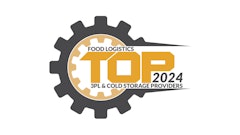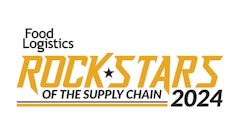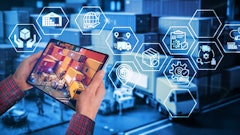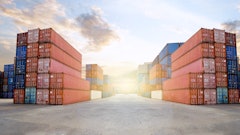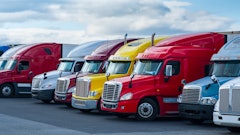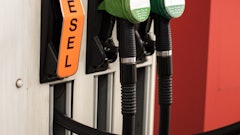
From enhancing visibility, building resiliency and mitigating risk to leveraging smart technologies and automated software, a digital supply chain means different things to different companies.
Yet, digitization itself presents the same benefits across the board in moving temperature-controlled foods in a safe and efficient manner.
Marina Mayer, Editor-in-Chief of Food Logistics and Supply & Demand Chain Executive, talks exclusively with Kaitlin Mercier, VP of partnerships, Routeique, who showcases why it’s important to consider a 3PL or transport partner as a strategic advantage for your business.
CLICK HERE to read the article in full.
Food Logistics: What is a digital supply chain? What does it mean for you/the cold food chain?
Kaitlin Mercier: A digital supply chain involves leveraging the right combination of technology, processes, and people to seamlessly move raw materials through manufacturing to where they are consumed. It’s not enough to just digitize your existing supply chain processes or add a piece of software. Instead, it’s about carrying out a digital transformation and evaluating how processes and roles should evolve alongside technology and consumer expectations.
In our organization specifically, we measure the success of digital supply chains by their ability to provide supply chain leaders with “insight, foresight and oversight.”
Insight means having real-time visibility into what’s happening, foresight means having the ability to forecast what’s going to happen based on data, and oversight means being able to measure the compliance and service levels of partners in the network.
When organizations in the cold chain/food chain have a well-executed digital supply chain providing them with insight, foresight, and oversight, they can improve sustainability and efficiency, reduce food waste, lower costs, and boost customer satisfaction.
Food Logistics: Describe some technologies and solutions defining the future of digital supply chains.
Mercier: It might seem simple, but it's worth noting that many companies in the supply chain are still using paper for portions—or all—of their processes. And so, I think for the health of our food supply chain, the future is many companies taking small steps in the same direction.
The first step is just working on establishing the foundation, the fundamentals. For example, can they see an accurate description of exactly what's on hand, and where, in their network? Can they use that to anticipate blockers or issues before they arise? Are they able to use that data for planning? Can they use that data to strategically move product around before it goes to waste?
Once this baseline is established for the network, then you can start to leverage AI to solve problems that rely on having good-quality data. For example, three problems we are using AI to solve are below.
- First, think about a large network of warehouses and products moving and being stored throughout the supply chain network. There’s a lot of opportunity to optimize how product moves through those facilities or where it’s stored within them to reduce cost and optimize space utilization. We’re using AI to analyze warehouse layouts, product storage requirements, and customer order profiles to optimize where products should be placed in each facility.
- Another solution is technology-supported demand forecasting. One thing we see a lot is clients starting out in new markets. In this phase, more often than not, the client might over-ship the product and end up with a little bit of waste there. But with AI and other digital tools, we can use demand forecasting to look at customer profiles in a new market. We can determine how much we might want to start with for inventory or evaluate what's moving as volume ramps up.
- The third AI application is capacity planning. Whether you own your own facility or are a 3PL provider, how much capacity do you have based on the type of product you're handling, the temperature requirements, and the racking you have in place?
That seems to be something that is challenging for companies to solve.
This challenge can arise because, often, companies rely on week- or month-old inventory reports to determine, “Do we have space for this?” But, when you have up-to-date data, you can use it to make recommendations on how to optimize the space that you have, and how much product you can take on. For example, if, thanks to real-time reporting, you know your capacity up to the moment, it becomes much easier to decide: “Can we transfer products from one facility to the other?” Or, if you are a 3PL, to decide, “Can we help a new client out based on their requirements?” Effective capacity planning boosts efficiency and helps to ensure product integrity.
Food Logistics: Where to start? How do companies start the journey toward a more digital supply chain? Outline some good first steps.
Mercier: The first step is making sure there's a really strong foundation: that you have visibility into what's happening to inform good decision-making now. This can involve asking: “What do we need visibility into? Is it inventory on hand? Is it turn rates? Is it what's expiring, and when? Is it what customers are buying or not buying?”
Once you can answer these questions and have good-quality data about what’s happening now, the next step is driven by what problems you need to solve, what decisions you need to make, and what data you require to make those decisions. Instead of implementing a certain tool or technology because everyone else is, start with the problems and decisions you are faced with and work back from those.
After you have baseline visibility, the next step is anticipating what might happen or what your customers might buy in the future. Once you trust your data, you can lean on technology to make recommendations using that data.
The final phase of that journey–which may feel like a future state for many people–is empowering your technology to make some of those decisions for you. For example, if you are running low on a certain SKU, the system would automatically detect this and order it, and you could be sure it would be coming in next week.
Food Logistics: What sectors (i.e., agriculture, frozen foods, etc.) are more impacted/affected by digitalization than others and why?
Mercier: There's certainly more pressure on sectors with a shorter shelf life, just because there's less room to get it wrong. For example, fresh produce or dairy: that type of product has such a short shelf life, so you want to ensure that it gets into the hands of consumers as quickly as possible. While efficiency is important for all sectors, there's less margin for error in this space.
As part of the Fresh Field Catalyst program, we saw firsthand how tight the timelines are. You can see shippers or growers moving their packaging facilities to be right next to where the produce is grown. So, for some of the year, they'll be in one location. Then, they'll pack up their entire packaging facility and move it to another location as the growing seasons cycle, simply because it's so crucial to have that short window from pick, to pack, to delivery. Regardless of what leg of the journey you're managing for those food companies, this shows how important it is to have product moving as quickly as possible.
Digitalization can help ensure that these tight timelines are met and that the products’ temperature and integrity are maintained throughout the journey.
CLICK HERE to read the "Breaking Down the Digital Supply Chain" article in full.
Food Logistics: From food production to the retail and/or foodservice outlet, how does a digital supply chain transform the way food is moved from Point A to Point B? This could also entail fleet, warehousing etc.
Mercier: Supply chains becoming more digital provides an opportunity for us to optimize at the supply chain network level.
Before, it might have felt a little bit more static. You'd have certain facilities in markets that you felt were close to your typical customer base, and then you carried inventory based on your best prediction of what you might need in those facilities.
Now, with more partners on the network using technology with better-quality data, we're seeing companies looking at things like “How much inventory do we have across the network? What consumers are purchasing this product?” From there, they can start to automate the movement of inventory to where it's moving [selling] because then it has a higher chance of being sold and ultimately enjoyed by someone.
Additionally, more companies are leveraging third-party logistics providers so that they can be more agile. A common scenario is that at certain times of the year, there's a lot of inventory required in one market, and at other times of the year, more inventory needs to shift over to another facility in the network. It's a lot more agile and data-driven than it used to be.
This is because it's costing everyone money if there's inventory sitting. In other words, inventory in motion is more sustainable and less expensive than static inventory, and we're seeing that businesses are optimizing for that. Technology is really helping businesses to prioritize moving products to locations where that product is selling faster.
So, to sum up, whereas the way food was moved from A to B used to be a little bit more static, it's become a lot more dynamic, agile, and data-driven, and networks now comprise more partners than they used to.
Food Logistics: Describe some other trends and challenges with regards to digital supply chains.
Mercier: A trend that we’re seeing is that networks are becoming more complicated and digital. While this comes with many benefits, it also comes with challenges because every partner in the network might be using a different technology solution. Therefore, I think one of the challenges—which is also an opportunity—is collaboration within networks.
Sometimes, network anchors will sponsor a technology solution or support the integration because it's good for the whole network if everyone's using a similar solution. Another option for all partners to use common API interfaces—a lot of technologies can be integrated, and you can move data easily from one to another because more and more technologies have a common set of API endpoints that can be used.
To achieve effective collaboration, it’s important to ensure that each partner in the network has good quality data, and that it translates when they're sharing orders or inventory with other partners in the network.
Food Logistics: What are some things not addressed above that may be pertinent to our readers?
Mercier: I would say that businesses may need to reconsider how they work with 3PL providers. It makes a lot of strategic sense for businesses to engage 3PLs so that they can focus on other things. But we can't forget that there should still be collaboration and strong partnerships.
I think there's often a risk of warehouse and transport services becoming something that businesses consider and select based exclusively on price. Often, what we hear from clients who had a bad experience with their 3PLs is that they were very quick to choose a partner and very quick to get up and running, but then they ended up losing on their customer experience and overspending on the back end attempting to reconcile what might have gone wrong.
Because of this, it’s important to consider a 3PL or transport partner as a strategic advantage for your business and to take the time to evaluate and select the right partners for your network. And then to collaborate with them, work with them, and get to know them really well like you would any member of your team.
The main benefits of taking this approach are consistency, trust, delivering to your customers, and knowing who will handle your product. For businesses in the food supply chain outsourcing warehousing or transportation, we recommend looking for a 3PL that’s “high-touch and high-tech”. This means they are dedicated to working with you to provide high-quality customer care and have the technical expertise to provide you with critical elements like cold chain compliance, accurate data, and more. And for 3PL providers, offering that combo of high-touch and high-tech can make all the difference in retaining your clients and winning repeat business.
CLICK HERE to read the article in full.








